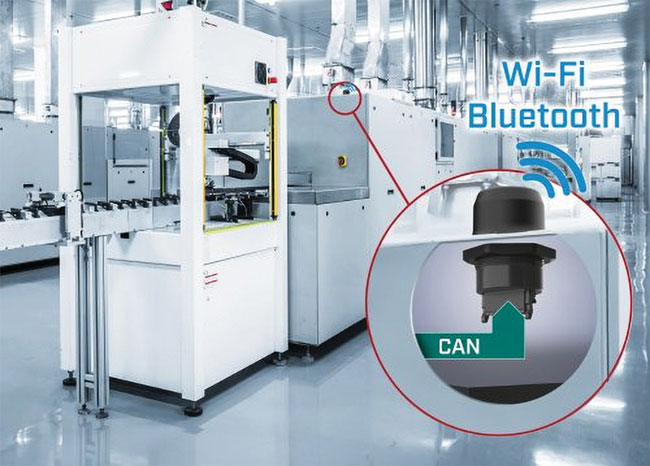
Bolt-on wireless connections
anybus.com
Anybus Wireless Bolt Controller Area Network (CAN) has provided thousands of industrial applications with wireless ethernet access. With a rugged and unique form factor for bolt-on-machine mounting, it is designed for the most demanding industrial applications. Use cases vary from warehouse installations and automated guided vehicles to manufacturing. HMS has now launched the Anybus Wireless Bolt CAN, featuring CAN-based communication to the host equipment. The new Anybus Wireless Bolt for CAN enables CAN-based, heavy-duty machinery and applications to transfer CAN data over a robust wireless link. Wireless communication is established either over a fast wi-fi connection or a reliable Bluetooth link. The CAN data is transported over a TCP/IP link which enables other standard wi-fi infrastructure to also connect to the wireless link if desired. A typical use case is wireless access to CAN data from an industrial vehicle, such as a bulk material transport truck. For example, with the Anybus Wireless Bolt CAN, J1939 CAN data is easily communicated to a handheld tablet which gives the operator full control and visibility of the ongoing bulk material filling process. Anybus Wireless Bolt CAN is fully transparent when it comes to transporting CAN data, meaning that it works with any CAN-based protocol, including CANopen. This opens the possibility to create mobile automation islands in any manufacturing process – the Anybus Wireless Bolt CAN will bridge the CANopen line wirelessly. In addition to the new Anybus Wireless Bolt CAN, the Wireless Bolt product family includes other versions which can connect to the host equipment using serial and industrial ethernet connectivity. On the wireless side of the Wireless Bolt, the wi-fi and Bluetooth options were recently complemented with a version that supports the new LTE standards NB-IoT and CAT-M1, targeting IoT applications.
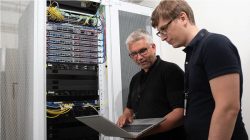 Cloud RAN
Cloud RAN
Ericsson has extended its Cloud RAN (Radio Access Network) offering to include support for 5G mid-band and Massive MIMO deployments. With mid-band spectrum, communications service providers can capitalize on their 5G spectral assets to roll out services quickly and efficiently, while delivering a more responsive experience to mobile broadband users.
These latest enhancements to Ericsson’s portfolio were developed in close collaboration with customers such as Verizon. They will enable service providers to seamlessly evolve towards cloud-native technologies and open network architectures and meet the demand for more deployment flexibility. Service providers will also be able to extend Ericsson Cloud RAN reach with seven million 5G-ready Ericsson Radio System radios already in the field globally.
Since the introduction of Ericsson Cloud RAN at the end of last year, Ericsson has the capability to introduce a virtualized RAN solution across all deployment scenarios including existing footprints – also known as bluefield deployments. Bluefield deployments enable service providers to deploy Cloud RAN into their networks and capitalize on the full interworking between the two network architectures. This is driven by Ericsson Cloud Link, which enables value-add network technologies such as Ericsson Spectrum Sharing, Uplink Booster and Carrier Aggregation to operate across platforms.
A high-performing mid-band 5G deployment requires 150 times more compute power than 4G, in half the time. With the addition of hardware accelerators to deliver part of this needed compute power, cloud infrastructure becomes a feasible option for mid-band deployments. To meet the high-performance standards in 5G and beyond, Ericsson and Intel are pioneering the Cloud RAN space together.
Ericsson Cloud RAN creates more options for communications service providers and delivers a truly cloud-agnostic platform, supported by its long-term strategic partner, Intel. The portfolio will leverage Intel’s compute across multiple product generations of Intel Xeon Scalable processors and accelerator technology, to enable high-density capacity solutions. This enables both companies to deliver the type of performance seen in the most demanding RAN environments in the world.
The emergence of virtualized and distributed computing architectures, together with disaggregation of hardware and software, has reinforced the value of open innovation ecosystems. Ericsson Cloud RAN is designed to be cloud-agnostic with supplementary cloud integration services to facilitate the onboarding to the service provider’s cloud infrastructure of choice.
To deliver that value and building on the foundation laid with Intel, Ericsson is also working with ecosystem partners, including industry-leading IT infrastructure vendors such as Hewlett Packard Enterprise (HPE). This collaboration brings additional flexibility to Cloud RAN deployments, as Ericsson customers will now also have an option to select HPE workload-optimized edge compute based on HPE ProLiant servers and any cloud platform to deploy their Cloud RAN networks.
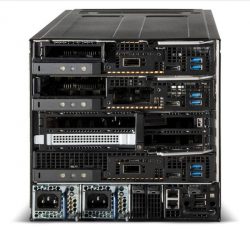 Link production floor and office
Link production floor and office
hpe.com
HPE Edgeline Converged Edge Systems converge operational technology (OT) – such as data acquisition, control systems and industrial networks – with enterprise-class IT in a single, rugged system suited for harsh edge environments to enable innovative new abilities at the edge. Unleash the edge’s full potential by running enterprise-class applications unmodified at the edge – not just pared-down edge versions. Run identical workloads in the data centre, cloud or edge – whether containers, virtual machines, databases, software-defined storage or something else. Actuate and control things at the edge through a single integrated platform that combines OT systems with enterprise-class IT. You can connect OT systems over interfaces such as direct-wired I/O and industrial protocols that don’t exist in the traditional ethernet-based IT environment. Overcome harsh edge environments with a rugged form factor that is designed for severe, space-constrained and dusty environments to withstand shock, vibration and extreme temperatures ranges. Converge OT systems already out at the edge with enterprise-class IT systems traditionally found in the datacentre to improve insights for greater business efficiency. Optimise operations by actuating the equipment that drives the industrial edge. Improve uptime and system administrator efficiency with new first-of-a-kind edge-optimised management that provides iLO-based familiarity and simplicity. iLO Amplifier Pack (Integrated Lights-Out) is an at-scale inventory and update management tool which enables customers with large Gen8, Gen9 and Gen10 Hewlett Packard Enterprise server deployments to get rapid up-to-date inventory and automate firmware and driver updates. It also assists in manual and automated recovery of systems with corrupt firmware.
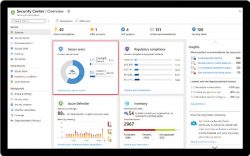 Defender for IoT
Defender for IoT
azure.microsoft.com
Azure Defender for IoT offers agentless, network-layer security that is rapidly deployed, works with diverse industrial equipment, and interoperates with Azure Sentinel and other SOC tools. Deploy on-premises or in Azure-connected environments. Use passive, agentless network monitoring to gain a complete inventory of all IoT/OT assets, with zero impact on the IoT/OT network. Analyze diverse industrial protocols to identify device details including manufacturer, type, serial number, firmware level, and IP or Media Access Control (MAC) address. Visualize the entire IoT/OT network topology, see device communication paths, and quickly identify the root cause of operational issues such as misconfigured devices. Proactively address vulnerabilities in the IoT/OT environment. Identify risks such as unpatched devices, open ports, unauthorized applications and unauthorized connections. Detect changes to device configurations, programmable logic controller (PLC) code and firmware. Prioritize fixes based on risk scoring and automated threat modeling, which identifies the most likely attack paths to compromise crown jewel assets. Monitor for anomalous or unauthorized activity using IoT/OT-aware behavioral analytics and threat intelligence. Strengthen IoT/OT zero trust by instantly detecting unauthorized or compromised devices. Rapidly triage real-time alerts, investigate historical traffic, and hunt for threats. Catch modern threats like zero-day malware and living-off-the-land tactics missed by static indicators of compromise (IOCs). Explore full-fidelity packet captures (PCAPs) for deeper analysis.
 Warehouse Wi-Fi IT
Warehouse Wi-Fi IT
logosit.ca
Warehouse Wi-Fi is critical for any operation, as so much of today’s modern warehouses rely on technology. Security is by far the most crucial component to consider when setting up a network. Regardless of the size of the warehouse, when introducing a new network, or expanding an existing one, it is important to ensure that everything connected to the Internet has the appropriate security protocols in place to keep a company’s data safe. But, security is not the only factor to consider when setting up a network; safety must be considered in tandem with how the business intends to use the network. An effective network is highly secure without resulting in lost productivity. A system with multiple layers of security may keep a business safe, but it may also slow production if every user has to login multiple times to access a single piece of data. A properly designed network is segregated, allowing for multiple access points depending on who needs to access the data, and how often. Each sub-network still readily talks to the others to maximize data protection. How a network is segregated comes down to what each business needs. A good network engineer will analyze your requirements and custom design a network to them. From there, hardware will be purchased to fulfil that solution. Be wary of a network solution that comes from hardware being sold to you before a custom solution is designed — it’s a sign that the network engineer is creating a plan based on what they want to sell rather than what your facility may actually need.
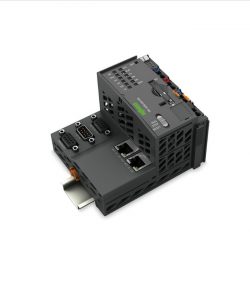 For extreme environments
For extreme environments
wago.com
The PFC200 XTR Controller for extreme environments and Ex areas: Engineering, controlling and visualizing where other controllers fail. With the PFC200 XTR Controller, WAGO offers a rugged device that excels in extreme environments. Requiring no additional protective equipment, the controller defies temperature fluctuations of minus-40 to plus-70 C, has extreme resistance to impulse voltage up to five kilovolts, is immune to interference and vibration-proof up to five gravities. Thanks to the eRuntime environment based on Codesys V3 and the real-time-capable Linux operating system, this PLC is the efficient control system for your automation tasks. This includes locations that demand more than a typical automation system can provide.
 Sensors For All Applications
Sensors For All Applications
Fujitsu.com
Fujitsu Components America has released a family of mesh network and multi-sensor units featuring built-in Wirepas Massive network connectivity. Based on the Nordic nRF52832 and an embedded FWM7BLZ20W Fujitsu Wirepas wireless module, the new FWM8BLZ08-x series endurance line consists of:
- FWM8BLZ08A Mesh Anchor unit for location/asset tracking reference point
- FWM8BLZ08T Mesh Tag unit with an acceleration sensor for location/asset tracking
- FWM8BLZ08Y Mesh sensor unit with embedded temperature, humidity, barometric pressure, illuminance, sound level, and acceleration sensors
- FWM8BLZ08C Mesh CO2 sensor unit also includes on-board temperature, humidity, barometric pressure, illuminance, sound level, and acceleration sensors
The CO2 sensor unit is powered by USB-C while all the other units have the option to be powered by four AA batteries or USB-C. Each is IP-65 rated against water and dust.The battery-powered anchor unit provides up to a five-year battery life. Utilizing the Fujitsu Mesh Anchors, Mesh Tags and Mesh Sensors, the Wirepas Positioning Engine (WPE) provides location awareness of stationary items and moving assets.
The units’ contemporary housing measures a compact 74.2-by-74.2-by-28 millimetres.They are FCC/ISED, CE and Radio Act Japan certified and have an operating temperature range of minus-20 to plus-60 C (with the CO2 sensor version starting from minus-10 C).
Print this page
